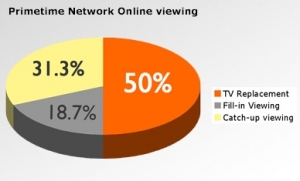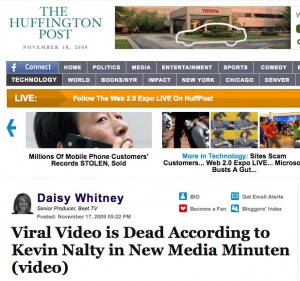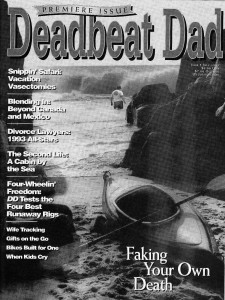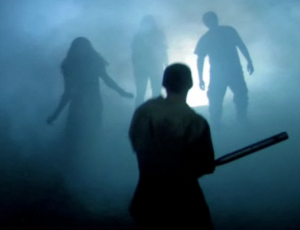 No I’m just kidding. Television isn’t dead yet (but I’ll let you know when it is).
No I’m just kidding. Television isn’t dead yet (but I’ll let you know when it is).
You didn’t waste money on that high definition set, and you advertising executives still have a little shelf life.
But here’s a new tidbit of research that verifies that online-video consumption is eating into our television viewing time. Courtesy of NewTeeVee (who I’m quoting way too often since they became my top RSS on iGoogle) and the folks from the Integrated Media Measurement Inc. (IMMI) (click here for full report via pdf):
Based on its tracking of primetime content across the major networks, IMMI has generally found that up to 20% of episodic content viewing occurs online, depending on the genre of the content
and the amount of time the show has been on the air. This amount is higher now, than last Fall
and in a few cases, is higher even than DVR viewing of the broadcast content.
This shift won’t soon reverse, or continue slowly. So that means it’s officially time to find a viable advertising model for free online video (and explore a fair paid model too). :
Try forcing a long preroll, and the advertisers have bigger problems than DVRs allowing people to zip through 30 and 60s (as if they weren’t running off to pee before time-shifting). But the good news is that the music industry helped us transition from copyright pirates into, to some extent, people too lazy to hunt and download free music. In time, it will be easier to pay a small fee or accept some ads as long as I can watch good quality video on my own time.
Now that the industry is maturing, watch for: bigger audiences, a better ad model, and more professional content. The amateurs are already losing share to professionals (check the YouTube most subscribed charts for proof), but the pie is continuing to grow. And as long as the economy doesn’t starve marketing innovative budgets (and force marketers to resort to proven but dying media) then I’m still bullish on the opportunities for advertisers, creators and audiences.
 Keep in mind the pretty charts by IMMI are a little deceptive. Like this ‘ere chart. It does not tell us that 50% of an average American’s time is moving to online video. Rather it says that half of us — upon being assaulted by a survey — acknowledge that, at some point, we looked to the Internet in lieu of television. I’m surprised that number isn’t higher. Most of us early adopters are probably close to 50/50 online-video vs. television right now.
Keep in mind the pretty charts by IMMI are a little deceptive. Like this ‘ere chart. It does not tell us that 50% of an average American’s time is moving to online video. Rather it says that half of us — upon being assaulted by a survey — acknowledge that, at some point, we looked to the Internet in lieu of television. I’m surprised that number isn’t higher. Most of us early adopters are probably close to 50/50 online-video vs. television right now.
But keep in mind that even though we’re all still watching television, our brains are clinically dead during this time (well, maybe just more dead than when we’re watching online video or pretending to care about the person rambling in that meeting).










